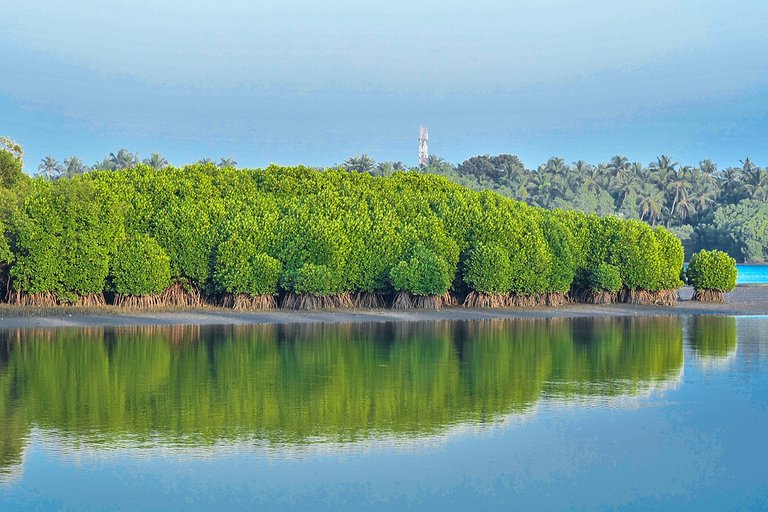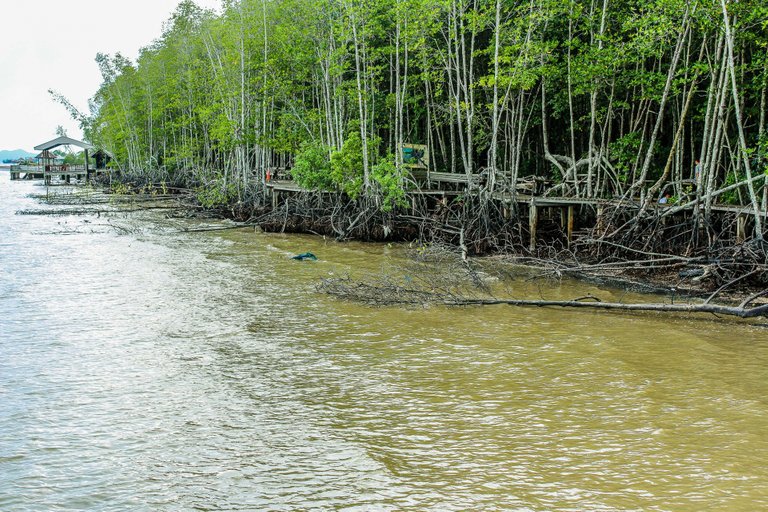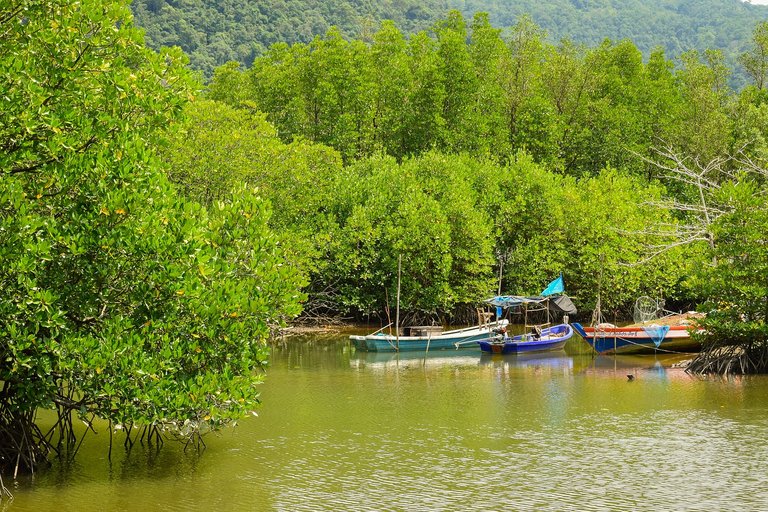Every year on 26 July, World Mangrove Action Day is celebrated. On this day, efforts are made to protect valuable mangrove forests around the world and to bring awareness about their usefulness. Today I want to talk about these natural Coast Guard.
The banks of the continents are constantly crumbling with the strong thump of the waves of the seas. On these banks, many big rivers take a union. Hence there is a wonderful confluence of salt and sweet water. In these specific types of water, a unique vegetation grows, which is called mangrove or mangrove vegetation.

Source
Mangrove forests are found only in regions with warmer climates of the Earth. For them to thrive, certain basic conditions are essential, such as constant flow of water, low oxygen content in the soil, and average winter temperatures above 16 degrees. In the first years of this century, 60 percent of the mangrove forests that were there have been destroyed today. Yet this type of forests on the earth is spread over 1 lac square km. Mangrove forests are mainly in Brazil (at 25,000 sq km), Indonesia (at 21,000 sq km) and Australia (at 11,000 sq km). Only about half of the mangrove forests found worldwide exist in Brazil. Mangrove plants of more than 50 species are found in these forests.
The seeds of mangrove trees germinate and grow on the mother-tree itself. When the tide rises in the sea and the water spreads towards the ground, some sprouted seeds break off from the water and break away from the mother tree and start flowing with water. When the tide comes down, they sit here and there on the ground and remove the roots and settle there. Mangrove forests extend through this process.

Source
Since these plants mostly work with alkaline water, it is necessary for them that the alkali present in this water does not get collected in their body. There are special alkali glands on the roots and leaves of these trees, from which the alkali remains continuously in liquid form. The rain water takes away this alkali.
Another feature of these trees is their respiratory roots. There is a thick layer of moss, algae etc. on the water of the beach, due to which there is very little oxygen in the water. Hence the roots of these trees do not get enough oxygen. To deal with this problem, they have specific types of roots which, unlike normal roots, emerge from the ground upwards. These roots absorb oxygen from the air around them and deliver it to the roots below. These roots are called respiratory roots. Their second task is to give support to the tree.

Source
The roots of mangrove trees rot quickly due to being hollow inside. The waste of leaves also gets collected under the tree. Every year 8–10 tonnes of organic waste per hectare is produced in mangrove forest land. They are tied to the roots of all mangrove forest trees. For this reason, where there are mangrove forests, the coast gradually starts moving towards the sea. This artificial coast protects the back ground from sea erosion. But all this area is very fragile and very soon disintegrates when mangrove trees are cut down. After the destruction of the mangrove area, the land behind them also succumbs to sea erosion.
Another use of the mangrove area is that it provides shelter to many types of animals. Fishermen have been earning livelihood by catching these sea creatures since time immemorial. Mangroves also receive a flammable substance called peat, which is similar to coal. Mangroves are also a renewable source of tannins, items of medicinal importance, etc.

Source
Nowadays mangrove forests are facing many dangers. One simple way to earn foreign exchange is by producing shrimp etc. sea creatures in artificial reservoirs and exporting them. Today, aquaculture has started taking place for these creatures in coastal areas. The pollutants released during this cause great damage to the mangroves. Mangroves are also being destroyed due to the increasing trend of fishing from motorized boats.
Due to the increase in the temperature of the earth, in this century itself, the ocean floor has risen 10-15 cm. The changes in the flow of water, alkalinity, temperature etc. can adversely affect the growth of mangrove trees. Industrial pollution is also destroying them. Mangroves are slowly disappearing from all these activities. Avoiding destruction of these specific types of forests should be our priority, as they have many ecological uses.
Very beautiful views.
Thanks @sreypov
Mangroves are so very important for many reasons. Very amazing trees. Thanks for the post. Very interesting.
Such a undervalued thing the mangroves but such a great world to animals love the photos
LUGAR HERMOSO
Thanks @elaleman